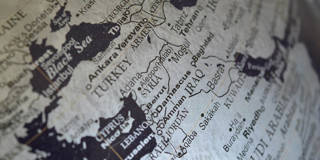The breach in diplomatic relations between Iran and Saudi Arabia is a dangerous watershed in an unstable, war-torn region. The trigger was the Saudis' execution of a firebrand Shia sheikh, but the rupture has its roots in a strategic rivalry that stretches across the Middle East.
PRINCETON – The breach in diplomatic relations between Iran and Saudi Arabia is a dangerous watershed in an already unstable, war-torn region. The trigger was the execution by Saudi Arabia of Nimr al-Nimr, a firebrand Shia sheikh who had called for the end of the country’s monarchy. But the rupture has its roots in a strategic rivalry that stretches across the Middle East.
The tensions between the two countries go back many decades, but they became especially acute after Iran’s Islamic Revolution in 1979. The revolution’s leader, Ayatollah Ruhollah Khomeini, did not hide his contempt for the Saudi royal family; he quickly positioned Iran as a champion of “the oppressed” against “the forces of arrogance” – the United States and its local allies, Saudi Arabia and Israel.
But while the rivalry has sectarian and ideological components, it is, above all, a pragmatic dispute over regional interests. Because Iran views the political order in the Arab world as serving its enemies’ interests, it has continuously sought to upend it, promoting terrorist groups and deploying proxies in order to establish and expand its influence in the region. The non-state actors Iran has supported include rioting pilgrims in Mecca, suicide bombers in Lebanon, and Hezbollah militants, who have launched attacks on Israel and, more recently, battled Saudi-backed rebel groups in Syria.

PRINCETON – The breach in diplomatic relations between Iran and Saudi Arabia is a dangerous watershed in an already unstable, war-torn region. The trigger was the execution by Saudi Arabia of Nimr al-Nimr, a firebrand Shia sheikh who had called for the end of the country’s monarchy. But the rupture has its roots in a strategic rivalry that stretches across the Middle East.
The tensions between the two countries go back many decades, but they became especially acute after Iran’s Islamic Revolution in 1979. The revolution’s leader, Ayatollah Ruhollah Khomeini, did not hide his contempt for the Saudi royal family; he quickly positioned Iran as a champion of “the oppressed” against “the forces of arrogance” – the United States and its local allies, Saudi Arabia and Israel.
But while the rivalry has sectarian and ideological components, it is, above all, a pragmatic dispute over regional interests. Because Iran views the political order in the Arab world as serving its enemies’ interests, it has continuously sought to upend it, promoting terrorist groups and deploying proxies in order to establish and expand its influence in the region. The non-state actors Iran has supported include rioting pilgrims in Mecca, suicide bombers in Lebanon, and Hezbollah militants, who have launched attacks on Israel and, more recently, battled Saudi-backed rebel groups in Syria.